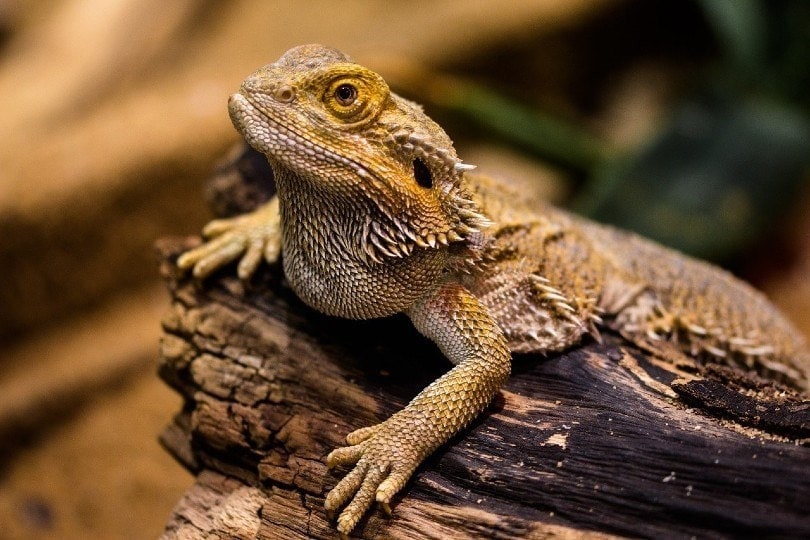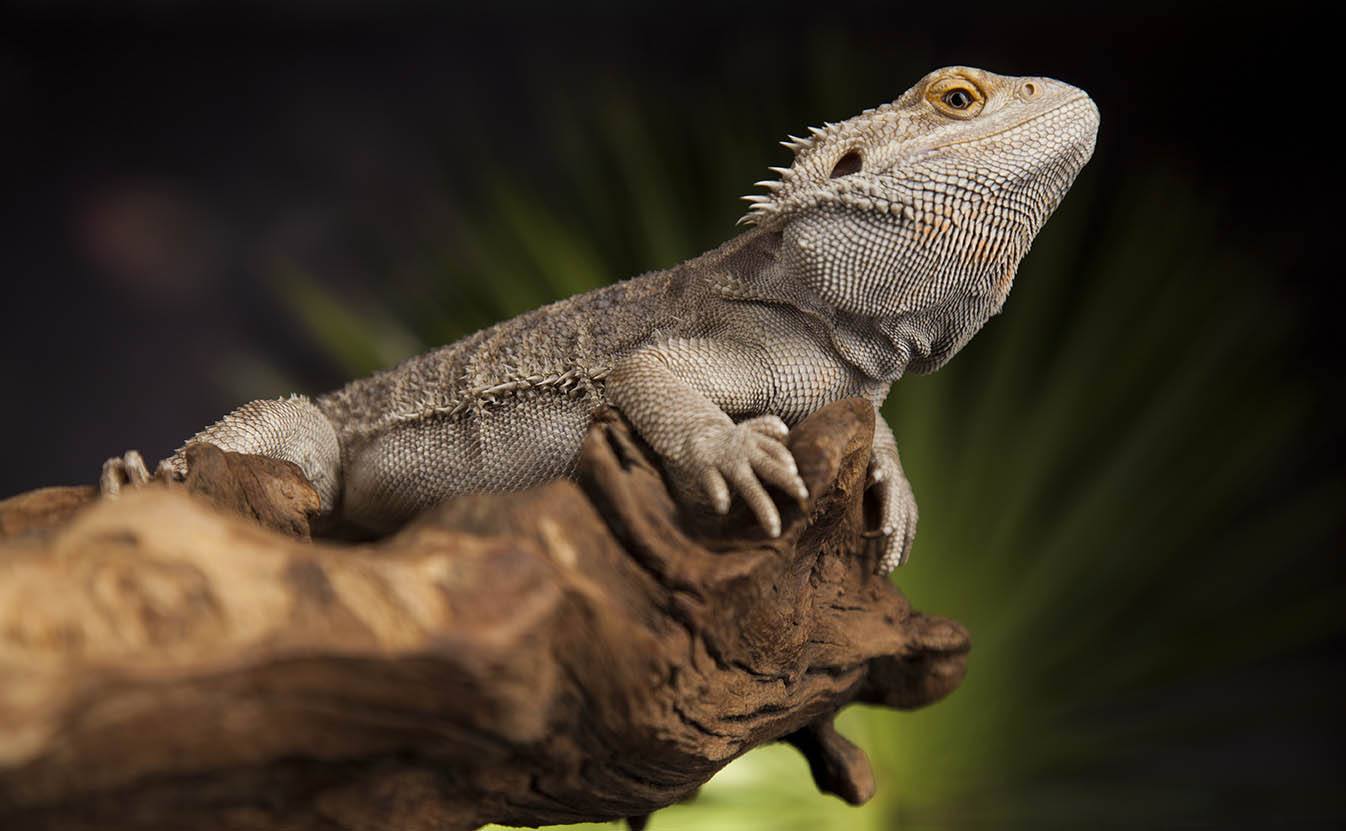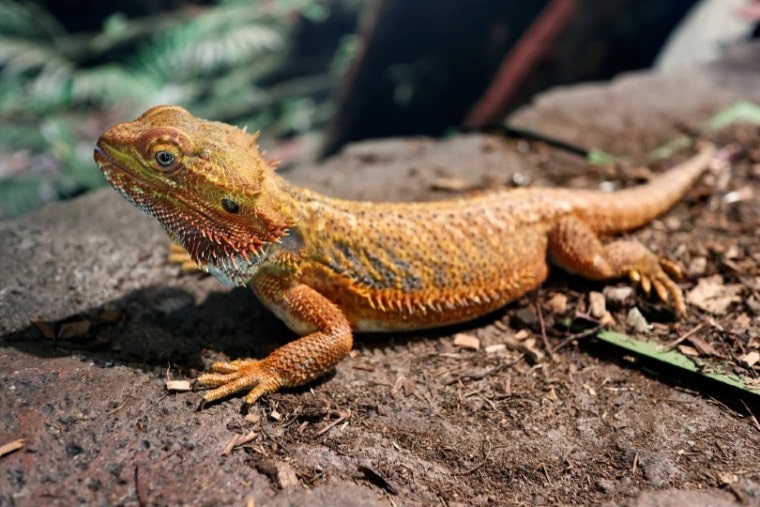
Click Below to Skip Ahead
For beginner reptile keepers, bearded dragons—also known as “beardies”—are often a popular choice thanks to their friendly nature and relaxed approach to life. As hatchlings, bearded dragons fit nicely into your palm, which is great for early socialization and getting them used to handling. Beware, though—these adorable hatchlings grow rapidly in the first 3 months at a rate of around 2 inches per month.
In this post, we’ll explain how big bearded dragons should be at different ages and reveal just how large these lizards can get. Brace yourself!
How Fast Do Bearded Dragons Grow?
As hatchlings, bearded dragons are vulnerable to predators due to their small size, so, to compensate, they grow at a pretty rapid rate. Their growth rate is accelerated in the hatchling (0–2 months) phase, in which they grow at around 2 inches per month and reach 8–11 inches. At the 3-month mark when they head into the juvenile phase (3–11 months), they start to grow more slowly.
As juveniles, bearded dragons typically grow around 1–1.5 inches per month, and, at this time, they start to put on more weight. As hatchlings, they gain around 10–30 grams per month, and, as juveniles, this increases to around 50 grams per month.
Bearded dragons continue growing until they’re between 18 and 24 months old, by which point they should have reached their maximum size. Check out this growth chart to get a better idea.
| Age | Size (in inches) |
| 0-1 month | 3-4 |
| 1-2 months | 5-9 |
| 2-3 months | 8-11 |
| 3-4 months | 9-12 |
| 4-5 months | 11-16 |
| 5-6 months | 11-16 |
| 7-8 months | 13-18 |
| 8-9 months | 14-20 |
| 9-10 months | 16-22 |
| 10-11 months | 16-24 |
| 11-12 months | 16-24 |
| 12-18 months | 16-24 |
| 18-24 months | 16-24 |
How Large Do Bearded Dragons Get?
This depends on a number of factors which we’ll get into further down, but bearded dragons can grow up to between 16 and 24 inches long. Fully grown, the bearded dragon can weigh more than 500 grams.
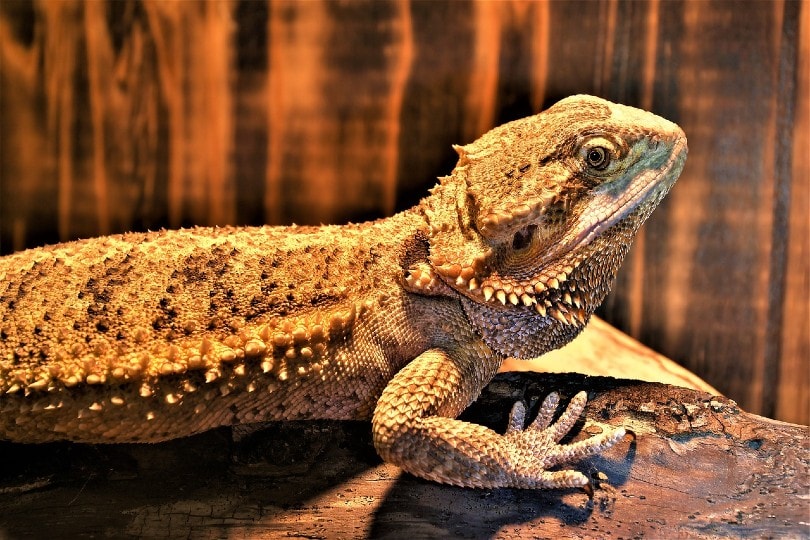
What Influences Growth?
As hatchlings, it’s difficult to guess exactly how big your bearded dragon will get because certain factors influence the growth rate. One of the major factors is bloodlines.
If you’re able to get a look at your bearded dragon’s parents, this will give you a good idea of how large they’ll become. Another factor is sex. Male bearded dragons tend to be larger than females with thicker tails and bigger heads.
The environment you keep your bearded dragon and how well they’re cared for are other major factors in determining growth rate and size. If a bearded dragon is kept in a tank too small for them or is fed a poor diet, they won’t be able to reach their full growth potential. A well-cared-for bearded dragon can grow properly and enjoy a lifespan of around 10–15 years.
Our 5 Bearded Dragon Care Tips
1. Tank
Bearded dragons outside the hatchling phrase need a tank between 55 and 120 gallons to be happy, healthy, and grow appropriately. A 75 gallon tank is an excellent choice for a bearded dragon’s enclosure. However, keep in mind that dimensions matter. These gorgeous reptiles can easily attain a length of about 2 feet (at times, even more) so you would want a setup that’s both wide enough to allow for easy turning, and long enough for them to run around as well. The enclosure should also have sufficient height, as it’s needed not only for your pet’s comfort but to also set up a temperature and humidity gradient that is appropriate for your pet.
There is no harm in going for a bigger enclosure. In fact, a larger setup is highly recommended for your beardie.
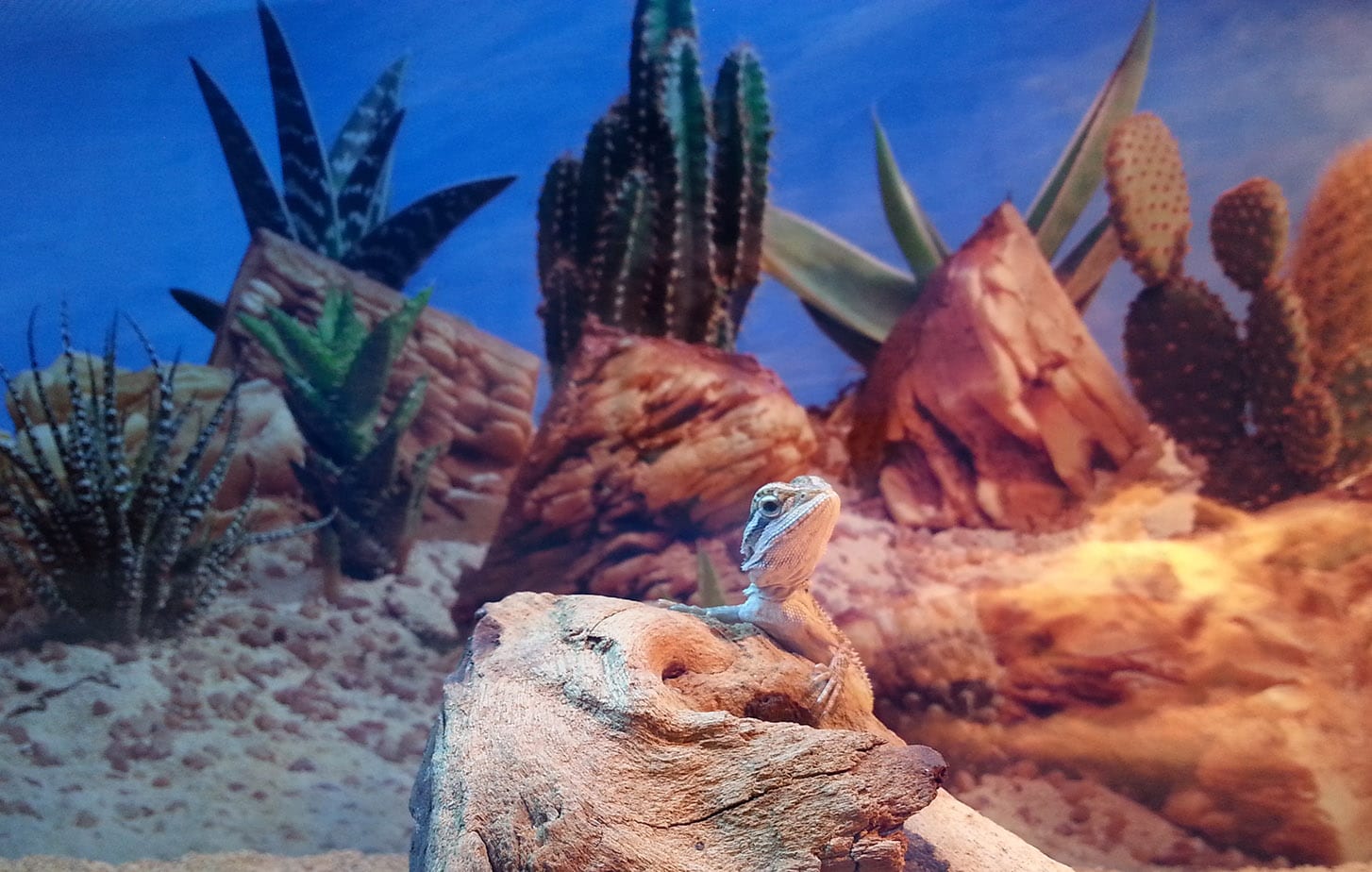
Other Tank Requirements
2. Heating
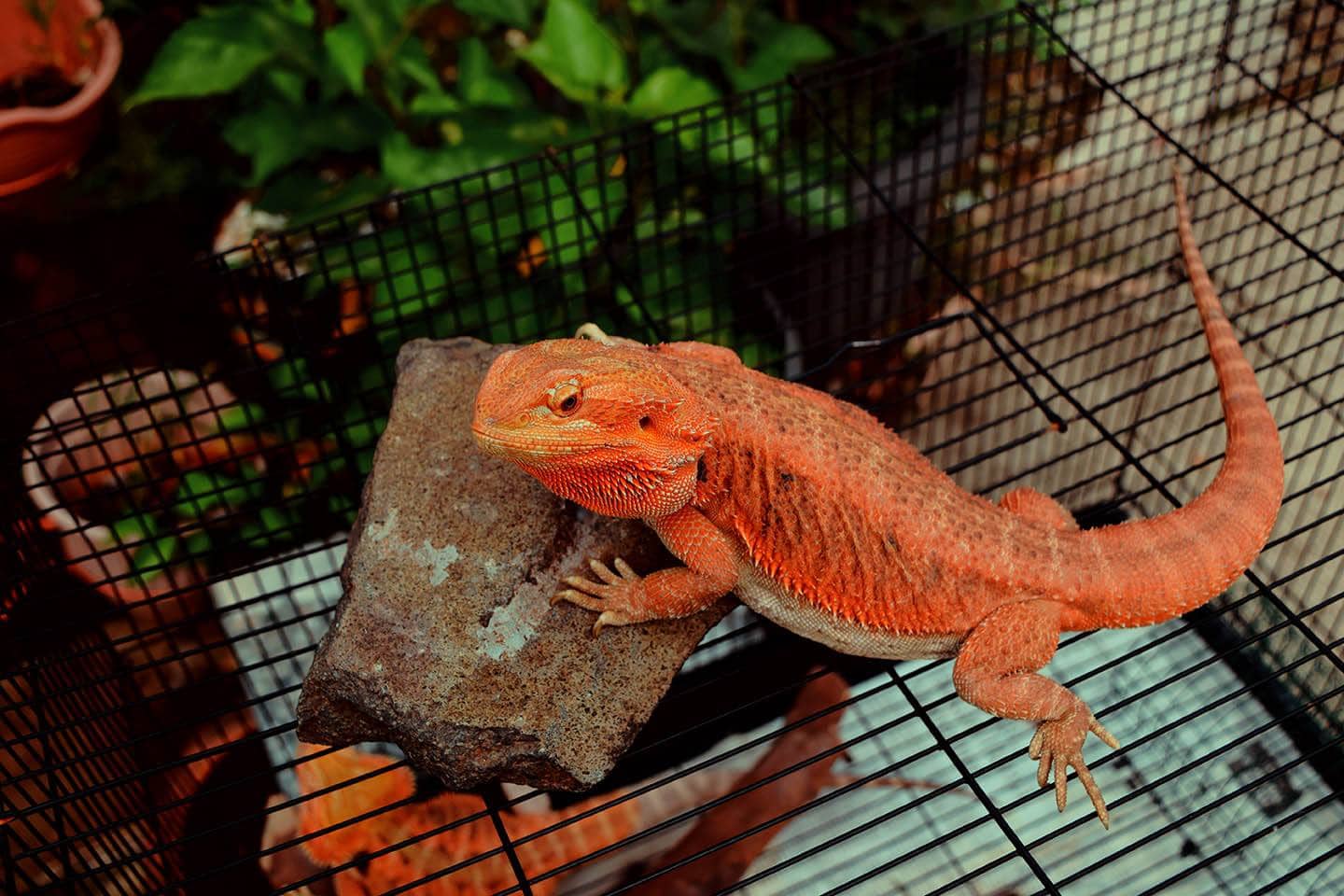
Like all cold-blooded animals, bearded dragons rely on their ambient temperature to regulate their metabolism. Their acceptable ambient temperature range is 77–89.6°F (25–32°C), but the hot basking area needs a higher temperature of 95–100.4°F (35–38°C). Your bearded dragon also needs a cool nighttime area with a temperature range of 71.6–77°F (22–25°C).
3. Lighting
Bearded dragons need UV lighting for 12–14 hours per day in spring and summer and 8 hours in fall and winter. You’ll need both a UVA and UVB light for your beardie’s tank. You should not have a glass cover or barrier between the UVB lamp and the baking area, because UVB doesn’t pass these barriers. The tank should be kept dark at night to ensure your bearded dragon can sleep.
4. Diet
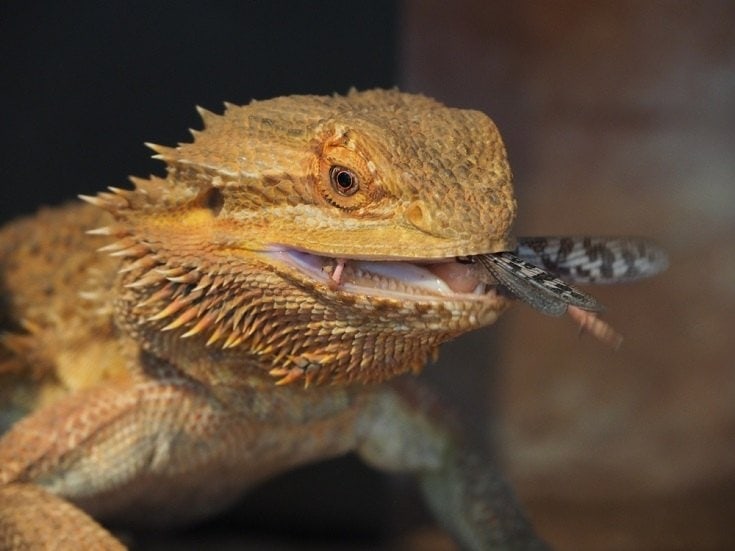
As omnivores, bearded dragons eat a variety of invertebrates and plant material. Suitable vegetables include broccoli, Swiss chard, bok choy, watercress, bell peppers, green beans, and chicory. Examples of suitable meat proteins include grasshoppers, mealworms, crickets, and locusts. These lists are far from exhaustive—there are plenty of tasty vegetables and critters your beardie can enjoy!
Younger bearded dragons need to eat more live invertebrates than fully-grown adults do. They typically eat around 65% live invertebrates and 35% greens, whereas adults need approximately 60% greens and 40% live invertebrates. These are just guidelines, and actual requirements may vary and are best discussed with your vet. You’ll also need to get hold of some vitamin and mineral powder—a supplement used to dust live food before it is fed to bearded dragons. These too, should be vet prescribed.
5. Humidity
The humidity requirements for bearded dragons are 20-30% for a healthy adult that’s not undergoing ecdysis (shedding). Juveniles or dragons that are undergoing ecdysis (shedding) need much higher humidity levels (at around 35-40%).
Final Thoughts
Bearded dragons make wonderful pets for beginners and experienced reptile-keepers alike. However, they grow at a rapid rate, so if you’re considering acquiring one of these lovely lizards, you’ll need to make sure you have a tank appropriate for their size and life stage equipped with all the essentials needed to grow healthy, happy beardies.
If you have any questions or concerns about bearded dragons, please have a chat with your vet to learn more about the best way to care for them.
Featured Image Credit: Joyce Mar, Shutterstock




